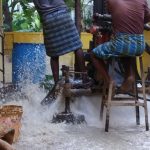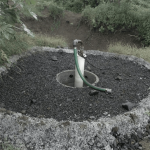Know About Rain Water Harvesting
The average Indian household absorbs 350 liters of water per day. A lot of this use is careless – and often costly. In summer, areas with water scarcity can end up paying up to Rs.2500 per month. All of this can be streamlined – with ease. This blog will tell you how to reduce your dependency on private suppliers by rainwater harvesting. So let’s begin:
What is Rainwater Harvesting?
Rainwater harvesting is an efficient, inexpensive, and secure technology/method for collecting, conveying, and storing rain from fairly clean surfaces like roofs for later usage. The water is normally contained in a rainwater tank. It acts as an alternate water supply throughout the time of water shortages.
You may also use stored rainwater for household, industrial or agricultural uses, such as drainage, outdoor sweeping, flushing of toilets, washing of clothes as well as for drinking purposes. Rainwater irrigation is capable of combating the water shortage. Effective and high-quality rainwater harvesting systems with adequate guidance and technology can meet all water needs and can save the water for future use.
Get the finest Borewell drilling services in Chennai!
Importance of the rainwater harvesting system:
- To address the inadequacy of groundwater to fulfill our needs.
- Stop the reduction in groundwater levels.
- Improving the supply of groundwater at a given site and time thereby allowing the use of rainwater for sustainable production.
- To increase the consistency of groundwater by dilution.
Advantages
- The expense of recharging the subsurface tank is smaller than that of the surface reservoirs.
- The aquifer also acts as a delivery channel.
- No ground is lost for storage purposes and no relocation of the population is involved.
- Groundwater is not specifically subjected to evaporation or contamination.
- Storage underground water is friendly to the climate.
- This increases the efficiency of the aquifer.
- It decreases the chances of floods.
- Effects are rising in the amount of groundwater.
- It prevents soil erosion.
Need best-quality rainwater harvesting methods in Chennai, India?
Rainwater Harvesting Methods:
To have a clearer picture of rainwater harvesting, let’s explore the processes. There are, mostly, two rainwater harvesting methods and they are as follows:
- Surface Runoff Rainwater Harvesting
- Roof Top Rainwater Harvesting
Now, let’s get a thorough overview of these methods:
1. Surface Runoff Rainwater Harvesting Method:
Surface runoff rainwater harvesting is a way of collecting rainwater streaming along the field after rainfall to a reservoir beneath the surface of the soil for irrigation and several other uses. It is essential to implement efficient and reliable methods of water conservation, i.e. by decreasing evaporation. Technology is quite easy to introduce and, if used appropriately, very productive. The key purpose of the surface runoff rainwater harvesting system is to satisfy the ever-increasing water demands, mitigate water waste, soil degradation, and road floods.
2. Roof Top Rainwater Harvesting Method:
Rooftop rainwater harvesting is a form of capturing rainwater as it rains and rainwater is collected from the roofs of domestic houses or industrial buildings and deposited in the tanks. Rainwater may either be collected in a reservoir or redirected to an artificial recharging system to fulfill domestic/commercial needs by storage in tanks.
This is an easy, eco-friendly, affordable, and genuinely efficient system. Roof-top rainwater harvesting system (RRH) comprises diverting and recharging rainwater that lands on the roof of a house/building. The key purpose of rainwater harvesting on the roof is to enable the availability of water for potential use, to increase the consistency of groundwater, and so on.
Methods and Techniques:
The key ways of recharging groundwater are as below.
For Urban Areas-Roof top rainwater/storm runoff harvesting through:
- Recharge Pit
- Recharge Trench
- Tubewell
- Recharge Well
For Rural Areas-Rain water harvesting through:
- Contour Bund
- Gabion Structure
- Percolation Tank
- Check Dam/Cement Plug
- Recharge Shaft
- Dugwell Recharge
- Ground Water Dam
Conclusion
Rainwater harvesting and processing is an effective method that can be used to solve the global water shortage. The use of a rainwater harvesting method is of great importance to any society. This basic method of water management can be a boost to an amazing approach in regions where there is adequate rainfall but there isn’t enough fresh water supply. This will not only offer the best efficient and productive form of water supply but also will open the door to a range of other economic activities contributing to the most basic level mobilization of people.





